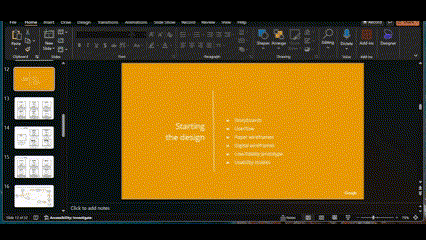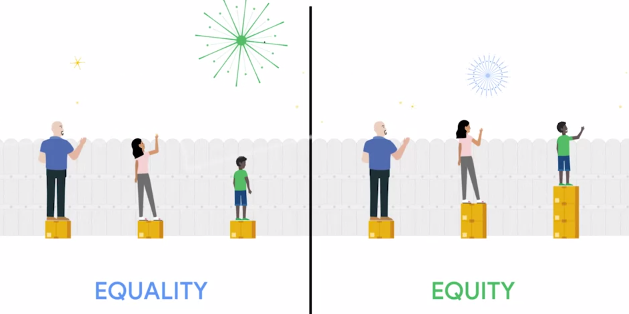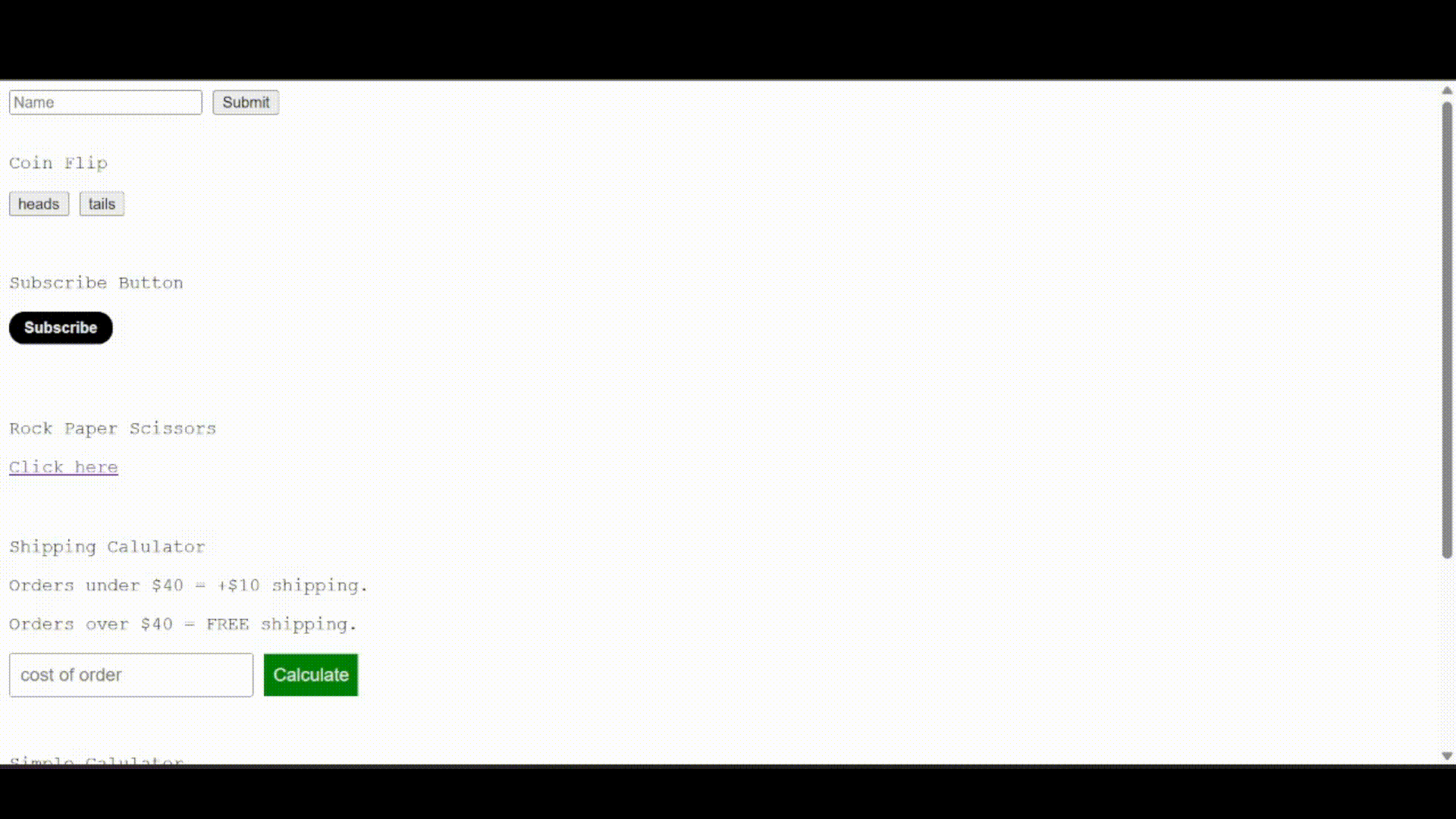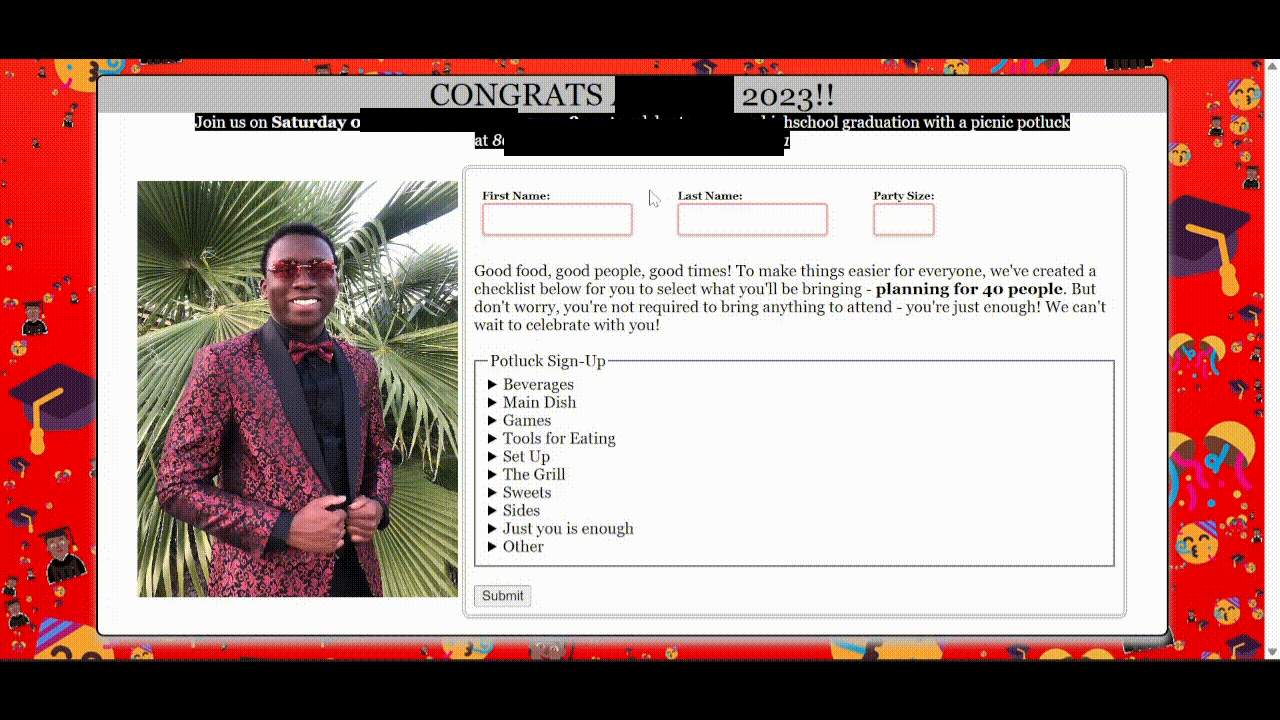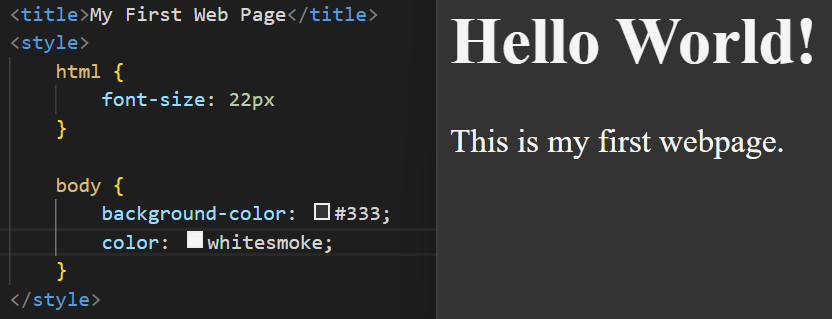Artificial Intelligence (AI) is a game-changer in higher education, sparking debates about its impact. While some argue that AI undermines the learning experience, others see it as an invaluable tool that can help struggling students. I firmly advocate for AI in education and believe that we should embrace its potential streamline productivity.
Consider my husband's experience, a computer science major who received a zero in his nutrition class due to suspicions of using an AI writing model for his summary. Despite having a solid understanding of the course material (a 95% in the class) and passing every quiz, exam, and time-wasting Jeopardy game, he was penalized for using AI to assist in writing his short answer. It begs the question: why should educational institutions punish students for utilizing smart and effective tools? Rather than fear AI, we should embrace it as a learning aid. Approved AI-powered tools such as Grammarly and EasyBib has helped students improve their writing and citation skills, facilitating academic success which is not considered cheating.
Of course, there is a time and place for AI in education. Using AI in grade school and high school may take away a student's ability to learn, overcome, and achieve. Recalling, my first 6-page persuasive essay in high school. Although a decent writer, I hated every moment of trying to put words and citations together, yet in the end, I was proud that I wrote something of academic quality. It's essential to learn the basics before finding shortcuts. However, AI can be a valuable asset in higher education, where students are expected to produce high-quality work quickly.
The solution is to understand how AI writing models are used. There's a big difference between “AI, write a short answer to this question…” and “AI, rewrite "this" short answer to this question for clarity..." To maximize the potential of AI in education, we need to teach students how to prompt AI with literary tones, styles, devices, and techniques. Rather than replacing human creativity and expression, AI can serve as a powerful tool to augment and refine these skills. Allow students to submit a rough draft and an AI draft with prompts for final review. Face it, students will continue to use AI - so we can either turn it into a “shadow of academia” and spend hours looking for traces of AI - that will get harder to detect - or embrace it in the classrooms for the good it can do.
For example, this post is AI assisted. I utilized my key points to prompt ChatGPT to expand my thoughts to create a blog post. Afterward, I used Grammarly to check for grammar mistakes and added some final touches. The different versions, including the initial draft, the AI rendition, the Grammarly version, and this final product, originated from my own ideas. However, using AI models such as ChatGPT significantly sped up the process from generating ideas to producing and finalizing a draft. All this time saved, I can get some sleep and actually study for the next four exams coming up.
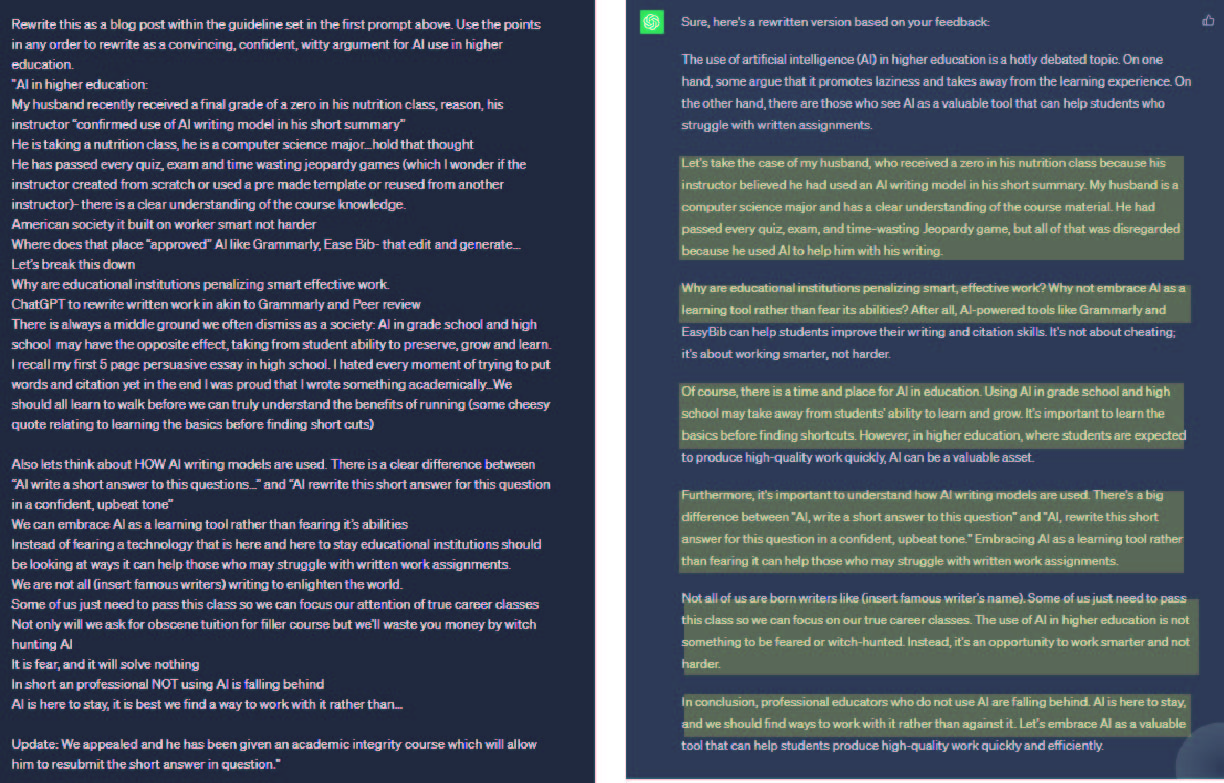
AI in higher education is not something to be feared or witch-hunted, but utilized as a tool to refine and augment students' skills. This way we can achieve the best of both worlds: technological innovation and academic excellence.

